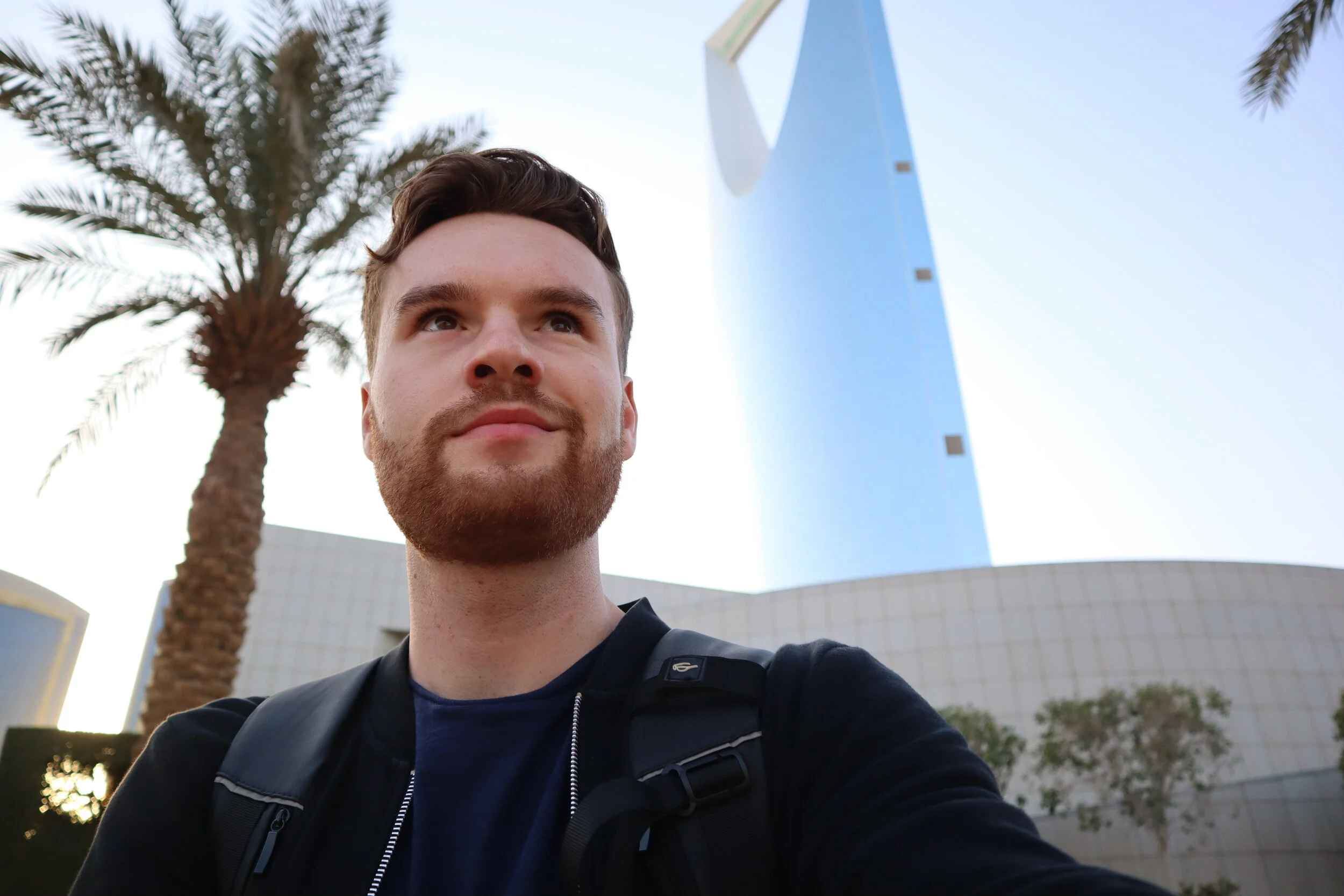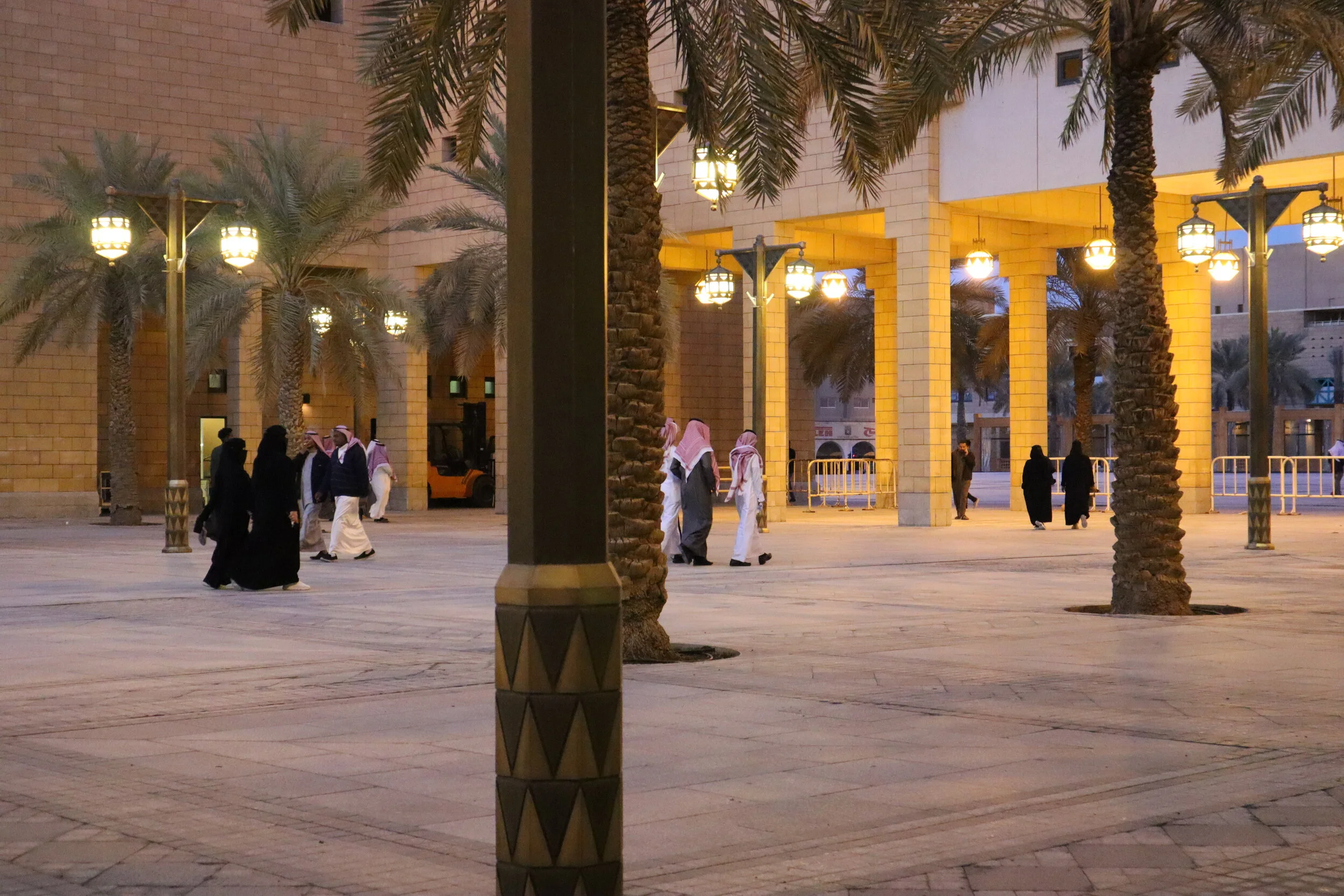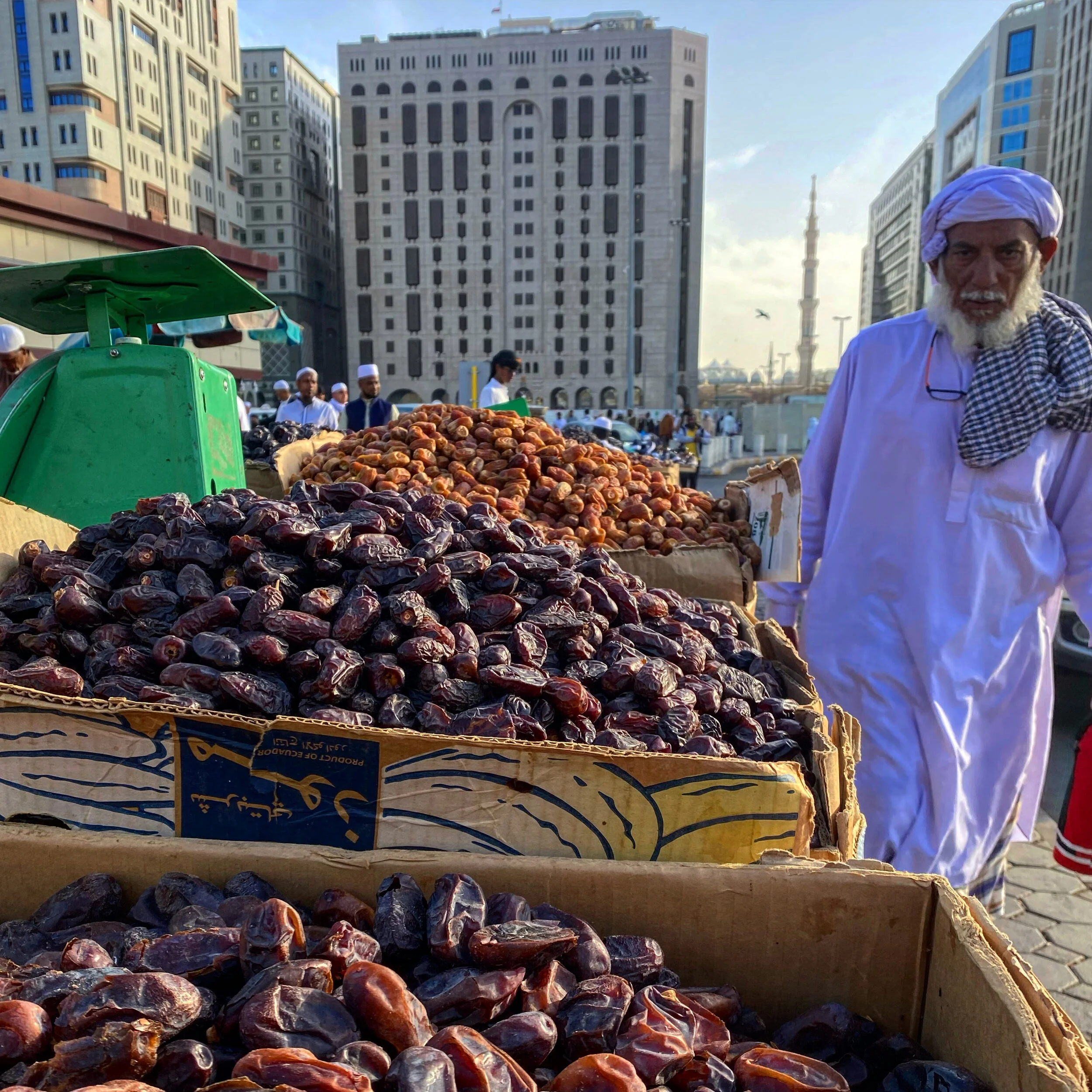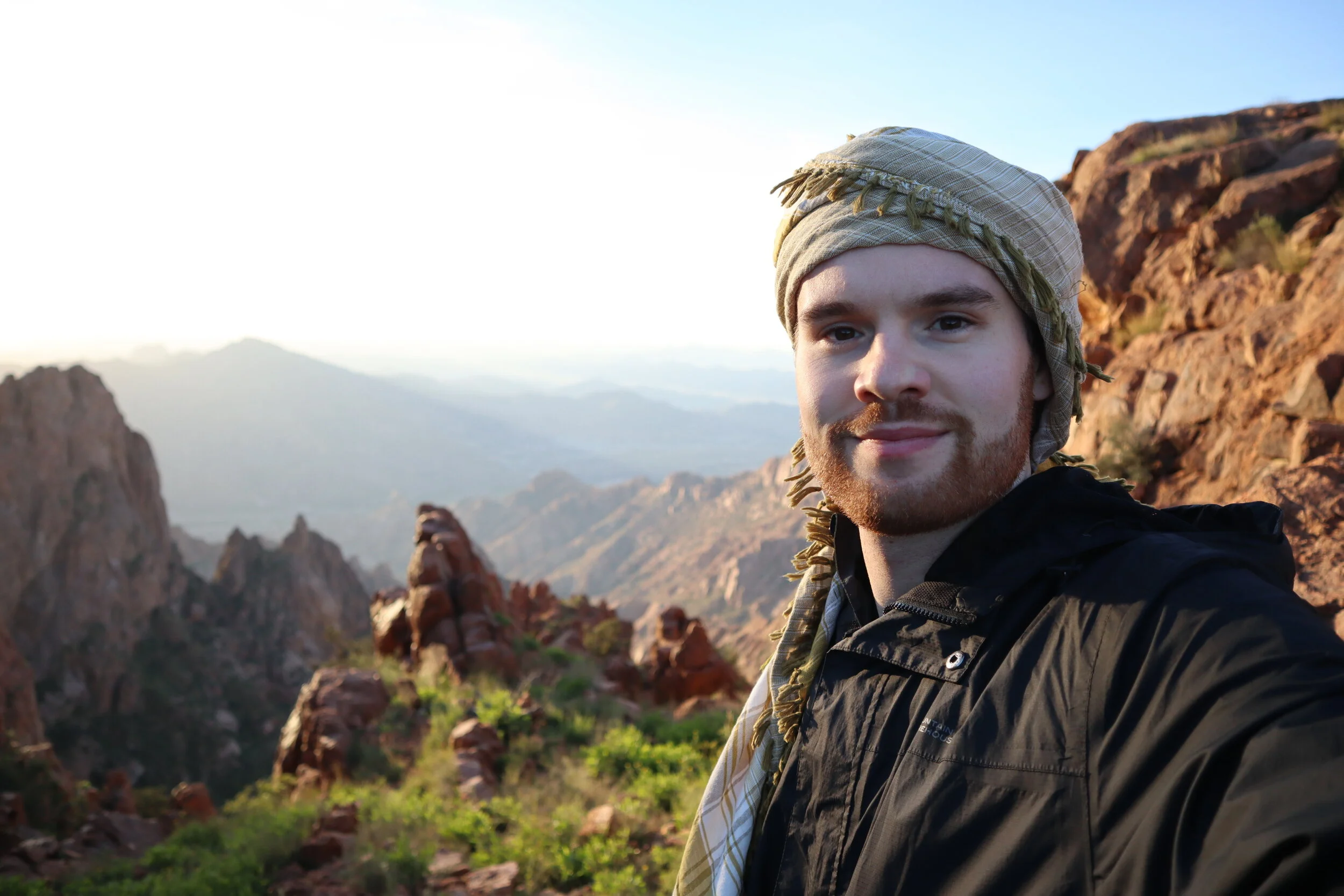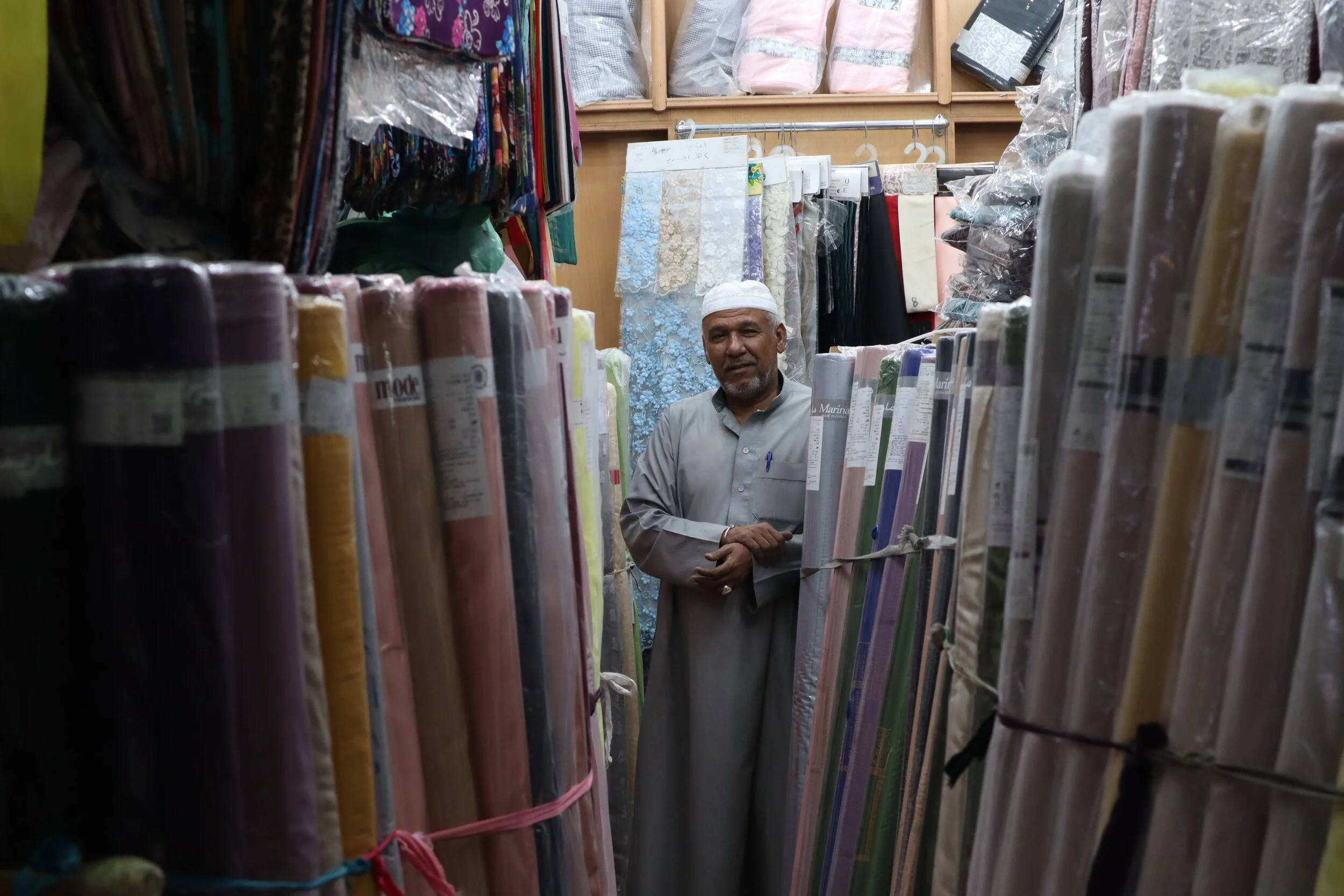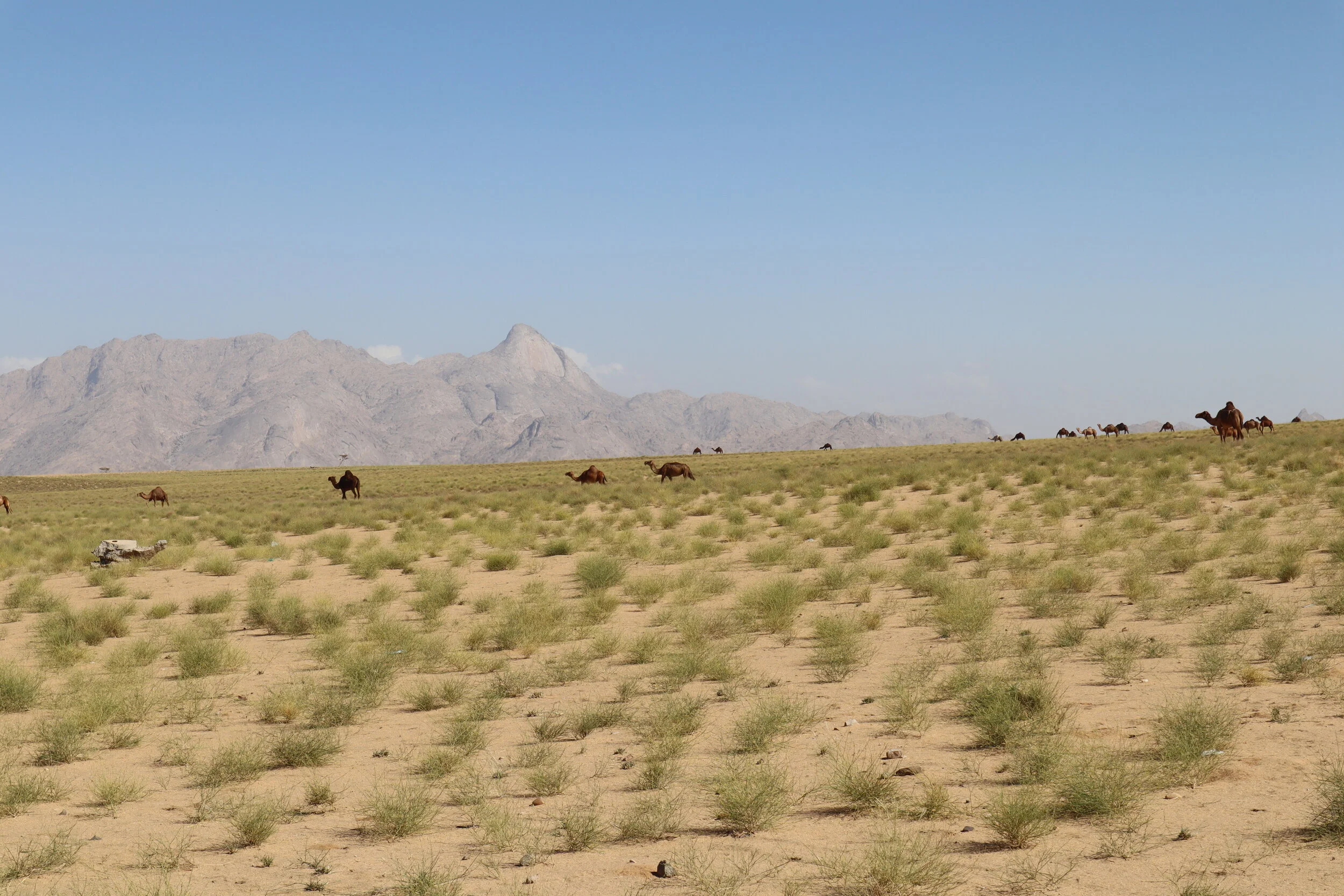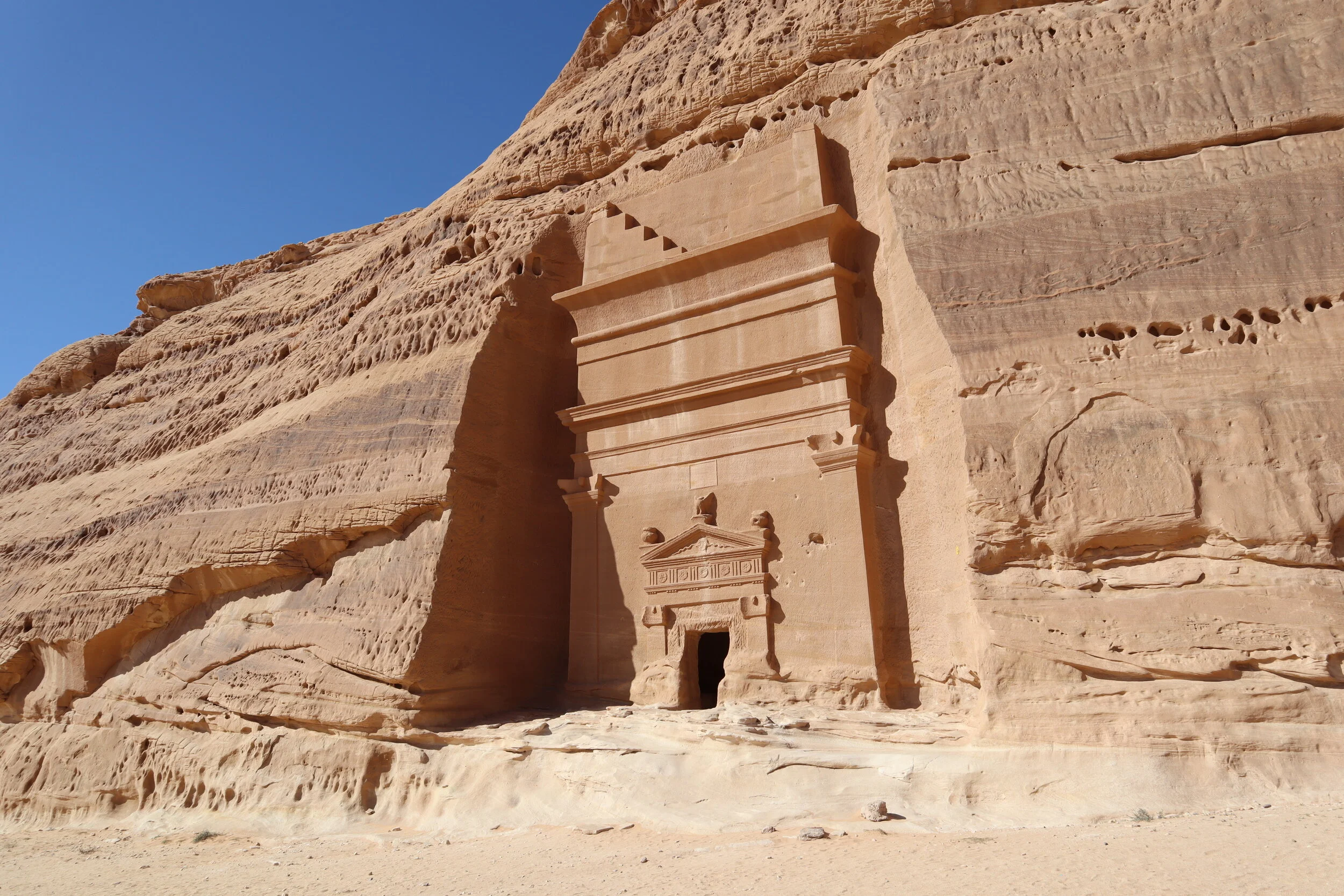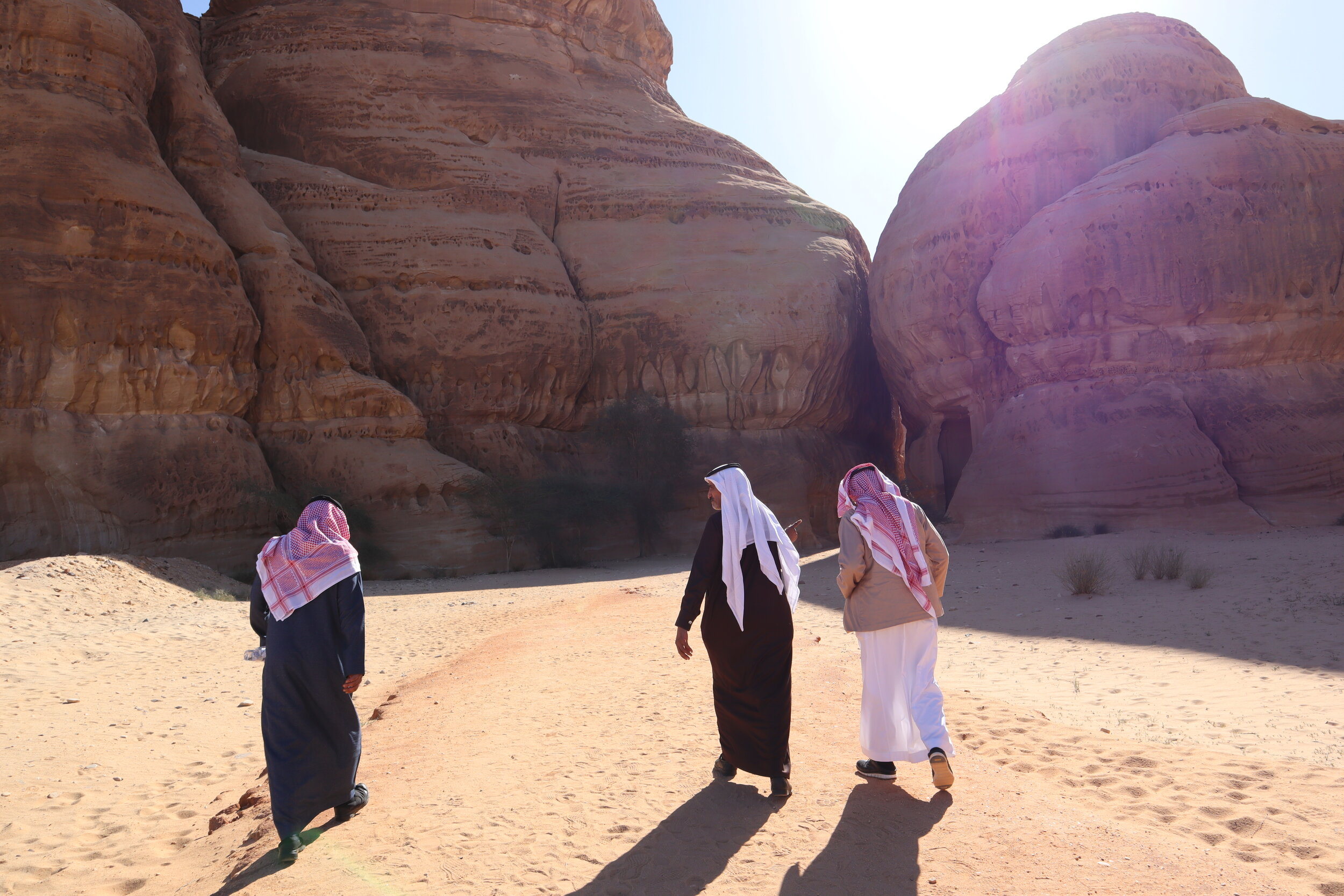Top 10 Things to do as a Tourist in Saudi Arabia
Immense Saudi Arabia. Newly opened to tourists. Here are my Top 10 Things to do here.
Saudi Arabia, until late last year, was a country almost entirely out of bounds to non-Muslim tourists. Following a series of sweeping changes across the land, in recent times there has been a dynamic international shift. As part of an attempt to diversify the economy away from an over-dependence on oil (popularly known as Vision 2030), the launch of a new eVisa scheme is targeted towards non-Muslim tourists and Muslim visitors alike. This was welcome news to many, including myself. In fact, so interested by this new opportunity, I immediately pushed Saudi Arabia to the top of my travel list for 2020.
Arabia is a land of unexplored wonders
Since visiting In Jan/Feb 2020, I’ve had time to reflect on my trip. I spent over a month in the country, visiting the major cities and most of the top attractions. I decided to compile a list of the top 10 things to do as a tourist in Saudi Arabia, given how comparatively little information there is out there for willing visitors. Obviously, this list is subjective to my own experiences. I hope it acts as a decent general guideline to those interested in giving Saudi a shot. So without further ado, here are my top 10.
10. go to the edge of the world
An easy one to start the countdown with, as it’s only a day trip from the capital, Riyadh. The Edge of the World is aptly named after its dramatic views at the end of a giant plateau. This also happens to be the same plateau Riyadh sits on. Going there and back in a day is a spectacular experience. Just be prepared to part with roughy $50 to do it - that’s if you decide to go with a tour (which I highly recommend you do). Here’s why:
Edge of the World
Travelling to The Edge of the World alone can be tricky, expensive, and perhaps stressful or dangerous. The cost of hiring a personal driver, or a car for yourself (which you’ll need at least a few buddies to split the cost with), works out much dearer than if you went on a tour. Renting your own car and driving there is difficult, because you’re not familiar with the route. At times, the road is barely visible through the empty, dry landscape. Especially when driving back at night. Put your pennies towards a tour, and the stress of doing it alone is alleviated. You can sit back whilst letting an experienced driver (who does this journey as his job) get you home safely.
Not only for these reasons, either. You’ll also have the rare opportunity to chat with other travellers. I made friends with a middle aged Estonian businessman, a Chinese girl studying in Russia, and a Belgian guy travelling in the Gulf. Until this moment, I had barely bumped into any other travellers in Saudi (as it’s not a typical destination for non-Muslim folks). So for more than just the convenience, the tour itself can be a great chance to get pally with someone, and perhaps continue your exploration of the country in new company. The tour group I went with are called Riyadh Hiking. They throw in a traditional meal on the way back in a cool setting - where you’ll have opportunity to drink coffee under the stars, by a fire, in huge Bedouin style tents. All with other like-minded people. Don’t miss it.
9. Cross the causeway from dammam to bahrain
Now I know Bahrain is a different country. Hear me out.
For some of you, after just a few weeks - or a month in the Kingdom, you’ll probably be craving somewhere with a less conservative atmosphere. In comparison to Saudi Arabia, Bahrain is a lot more lax. You can go out to bars and nightclubs to drink, and generally you’ll come across a lot more foreigners, and people you can interact with (55% of the population are expats). Plus your day won’t be interrupted by one of the five prayer times. In Saudi they close all shops and restaurants whenever there is a prayer, which can take some getting used to if you’re not accustomed to such norms.
Sharing a laugh with an Indian Expat in the Manama Souk
Make it to Saudi’s Eastern-most city, Dammam, and you’ll find yourself just a stone’s throw away from the pleasant archipelago of Bahrain. Crossing it is simple - the Bahrainians accept most nationalities visa free. And making the journey over the King Fahd Causeway is an intriguing experience in itself. The bridge is a whopping 25km long, running over the azure blue waters of the Arabian Gulf.
I loved my time in Bahrain. It has a different vibe to its bigger brother next door. Because of the large migrant/expat population, there’s an exciting array of food options. Thai, Indian, Filipino, Yemeni and local Gulf restaurants, are an example of what your taste buds can expect here. Marketed globally as a tourist-friendly stop-over point in the Middle East, some say Bahrain is the most liberal place in the Gulf (more so than the UAE, for example). So, if you’re nearby in Dammam, it’s a great place to check out, perhaps at the end of your Arabia trip. Plus you’ll visit another country in the process.
Bahrain
8. see the capital, riyadh
I wish I could’ve put this higher on the list. But in all honesty, I didn’t resonate much with Saudi Arabia’s capital city. I’ve included it at number 8, as it’s still an eye-opening place to visit (in terms of getting the know the country a little better). In my opinion, you can’t get a well-rounded view of Saudi Arabia without spending some time in the capital. Here, you’ll be able to marvel at a city which appears to have sprouted from the desert in a mere 70 years.
New Riyadh
Previously, Riyadh was a standard way-station in the middle of the abyss. Traders, bedouins and the like, would stop-by to restock their supplies, rest camels, and fill stomachs. Today, it’s home to a population of over 5 million. Huge investment has gone into the Granddaddy of Saudi Arabian projects. Propping up in the centre are impressive works of modern architecture, shiny new shopping malls, glamourous five star hotels and elegant restaurants. At night, a plethora of lights illuminates the city with green and purple. Essentially, I found that visiting Riyadh emphasised just how far the country has come since the days of warring princely states and bedouin tribes, vying for territory.
Old Riyadh
As I mentioned at the beginning, I wasn’t Riyadh’s biggest fan. Some of the city isn’t as well organised as I probably would have hoped, and at times it felt a little soulless. I do not however, regret visiting it. I met some interesting people, and had some fun outings - but without those friendly hosts I might have been bored, dare I say it, in a city where I struggled to find things to do. So get connected with someone who knows the city well, and your chances of leaving with positive experiences improve greatly.
7. eat rice in a local restaurant (with your hands)
There’s something special about sitting on the floor during Saudi lunch hour, picking at a huge dish of rice and meat with your fingers. Whether that’s the classic Kabsa, or milk and butter Saleek, get down on the deck and dig in. Surrounded by locals all the doing the same, there’s a genuine sense of community in this daily endeavour. Get acquainted with a local and even better, you can soak in expert advice on the proper hand technique and fine-tune your new skills. Finish it all off with some sweet Kunefe, and you’ll be ready for that mid-afternoon siesta along with the rest of the population.
Eating some milky Saleek
This is especially something to try if you’ve never plucked a hot meal with your hands before. It’s different to eating a cheeseburger, or a pizza. There’s a certain deep-rooted, human-food connection which is hard to explain. Picking up hot and messy food with our fingers takes us back to our roots. This natural simplicity is something which can’t be appreciated with a knife, fork or pair of chopsticks in hand. Give it a go and tell me otherwise.
6. pass through medina
Unfortunately, you can’t visit Mecca - the holiest city in Islam and most important place on the globe for Muslims. Based on the Quran, non-Muslims have been forbidden from entering Mecca for centuries (and this is still enforced by Saudi authorities today). Don’t bother trying to attempt it. To get caught doing so will likely result in some messy bureaucracy, or even deportation from Saudi Arabia.
Having said that, you can visit Medina, Islam’s second holiest city. That’s if you’re respectful about it. Mecca was the birthplace of the Prophet Mohammed. But Medina is where he lived, built his mosque, and died. In fact, Medina is where the Prophet actually spent the vast majority of his life. For pure historical reasons alone, there is no doubting what an interesting and significant place this makes it. Medina is also not so black and white when it comes to non-Muslim visitors. It’s more of a grey area that’s becoming more accepted. This has been helped by the fact that Crown Prince Mohammed Bin Salman has made an effort in the last year to open Saudi Arabia to the world, and welcome non-Muslims to the country.
Dates in the markets of Medina
I’ll be honest - originally I had no plans to visit Medina. I thought it was off-limits. Upon arriving in the country, however, I was told different by several Saudi’s themselves (well connected people). In fact, I was told that a number of non-Muslim travellers had successfully visited Medina in 2020 without trouble. If you’re interested, their nationalities were American, Canadian, Dutch, and Australian. I’d been told these foreigners had even been encouraged by the local authorities to explore the city. The sensitive part (and where you’ll need to be more mindful) is when you reach the Prophet’s mosque - located at the very centre of the city. It’s not recommended to attempt entering inside. It could offend a number of people, potentially causing you some problems. The rest, however, should be fine. Just as long as you don’t go inside the Prophet’s Mosque, you will be free to walk around Al Haram Square, enter the shops, eat at the restaurants, and chat with some of the locals and Pilgrims.
That’s what I did anyway. It was lucky circumstance on my part, I suppose. On my way north to Al Ula from Jeddah, I had some free time to waste in Medina. I had taken a train from Jeddah to Medina, and I was planning to take a bus from Medina to Al Ula. The gap between my train and bus later on, was six hours. With ample time to explore one of the world’s holiest cities, I simply had to take a peek. Encouraged by a number of positive Medina stories from fellow non-Muslim travellers, I set out for Al Haram Square, hoping to view the Prophet’s Mosque from a distance.
I’m pleased to report that I was able to wander around the city centre without any hassle. I walked past police and security, who didn’t seem to bat an eyelid at my presence. I walked side by side with Muslims from all over the world - many of whom stopped to have polite conversations with me. The constant stream of people in the thousands, going to and from the Prophet’s Mosque to pray and visit the Prophet’s tomb, is truly a sight to behold. It’s reason enough to experience Medina alone.
Outside the Prophet’s Mosque, Medina
5. hike the hejaz mountains near taif (& get views of mecca)
Hejaz mountains near Taif
Like me, if you’re a non-Muslim travelling in Saudi Arabia, you will be forbidden from entering Mecca (as mentioned in the previous listing). But that doesn’t mean you can’t get views of it. Or at least, the immense Mecca Tower that rises high above everything else. Hike in the Hejaz mountains near Taif (a particular spot which I will link below), and you’ll have the bragging rights of saying that you’ve technically laid your eyes on Mecca.
What’s more, whilst on the hike you will discover this wasn’t really about seeing Mecca at all. The biggest impact the trip will leave on you, is the astonishing scenery. It’s lush, green, and fertile. Essentially, everything you didn’t think Saudi Arabia was. Go at sunset for the best views. The light hits the rocks and the sky turns into an array of pretty colours. It’s not too arduous either. A bit of steepness at the end, but most able walkers won’t have any issues. Bring water, a few snacks and some sturdy footwear, and I promise you’ll find this experience special. Head down to Taif after sunset to grab some dinner, before driving back to Jeddah.
Now, this is quite a specific hike, so click these links and mark them on your map. See my video for more details.
4. accept a QAHWA invitation & drink arabic coffee with the locals
One thing is guaranteed as a guest in Saudi Arabia. Qahwa (Arabic coffee) and dates. You will be inundated, and there is no choice but to accept. Don’t drink too much either. Three or four cups is considered about right. Whether it is being invited into someone’s home, waiting for your table at a restaurant, or bumping into a group of locals passing by. They will persist, and you will drink. This custom of the Arabian peninsula has been at the centre of business, friendship and hospitality for centuries. And it’s truly a wonderful tradition.
An impromptu invite outside Thee Ain village
Bump into friendly strangers and they may ask you some personal questions about your life. Feel free to politely return the inquisitions. This is your chance to pick the brain of someone living in a culture (most likely) very foreign to you. It was during one of these coffee and date invites that my favourite picture during the entire trip was taken (shown above). Just outside of Thee Ain village, we met a group of friendly men who had laid out a beautiful, intricate rug. They planned to sit and enjoy the sunset over the usual sharp coffee and sweet dates. The sun was setting amidst the magnificent ruins of the village, swallowing up the backdrop. I had my red and white Ghutrah on, they wore traditional clothes. It’s at these moments where you’re able to experience the gentle nature of the locals - their character, everything for all it’s worth. These are the memories that stay with you the longest.
3. explore old jeddah (al balad)
UNESCO World Heritage site Al Balad is known for being one of the most beautiful Old Cities amongst the Gulf Monarchies. And it lives up to expectation, too. Consisting of tall buildings with colourful wooden lattices, the local life contained within the streets below them turns to its most vibrant at dusk.
In contrast to Jeddah’s flashy seafront, Al Balad is a throwback to the city’s port origins. The initial entrance of buildings are nicely polished today - but delve further, and you’ll stumble across a maze of exotic markets selling every spice and breed of date in Arabia. And running through the heart of this side of Al Balad is the Al Alawi Souq. Over the centuries, hordes of pilgrims would have walked through here on their way to Mecca. They would arrive (mainly from Africa) in their boats on the western side of the old town, at the Port of Jeddah. Generally, they’d stock up on food and supplies from the countless stalls and vendors lining the streets, before heading under Old Mecca Gate. From here, they’d continue their pilgrimage along Old Mecca Road to the Holy City.
Seller on Old Makkah Road
Nowadays, flights and air conditioned buses ensure masses of Muslims reach Mecca in 21st century comfort. Yet strolling down this part of Old Jeddah is retracing the steps of millions before you, and you can feel the special history this area still possesses today.
Music and dance from some African migrants living in Old Jeddah
2. road trip to assir mountain villages (thee ain & rijal alma)
Road trip
Road tripping in a hired car is probably the best way to see Saudi Arabia. Things are still pretty relaxed here in the sense that there are relatively few limitations or laws, requiring permits to camp. Unlike Europe, you can pretty much park and camp up wherever you like for the night. Given that it’s such a huge country, nobody usually knows you’re there either. You have endless possibilities as to what you may discover from venturing around on rented wheels.
Myself and a couple of friends did a two day round trip south from Jeddah into the Assir Mountains. I put these particular villages second on the list, because the journey there and back encapsulates almost everything that’s good about the typical Saudi Arabian road trip. Firstly, it’s easy to do - you start from Jeddah, which is a major city most of you will visit. Then there’s the stereotypical dry and arid landscape that everyone associates with Saudi, as you make your way south on a highway running parallel to the Red Sea. But then it gets more interesting. The typical desert is followed by a dramatic transition of scenery before reaching the mountains, which makes for a unique spectacle.
We saw hundreds of camels walking in the foreground of this insane mountainous backdrop. That’s exactly the beauty of taking road trips here. You have the complete freedom to drive wherever you want, and to get out of the car to see more details whenever you feel like it. It doesn’t end there, though. Head further up along winding roads into the mountain villages of the Assir, and you will find dramatic settlements positioned beneath and in between jaw-dropping craggy peaks. The two villages I’ve mentioned here - Thee Ain and Rijal Alma, are some of the very best. There are of course, many more, but make it to these two for a sunset and sunrise, and you will not leave the country feeling disappointed. A quick shout-out to the people of this region too - they are some of the friendliest and most genuine you will come across in all of Saudi. Probably, you’ll be invited to a dinner, perhaps even numerous times. We were.
Camels in the foreground, cliffs in the background
Rijal Alma village
My good friend who helped to organise this road trip (and the Mecca Tower hike listed at number 5), has his own website dedicated to planning road trips in Saudi Arabia. Marked maps and all. Take a look at his stuff here. It’ll be really useful.
1. gaze in wonder at madain saleh
So here we have it, number 1. Perhaps Saudi Arabia’s greatest historical site, tourist attraction, and also the most breathtaking place I personally saw on my trip.
Sometimes dubbed ‘the Petra of Saudi Arabia’, Hegra or Madain Saleh is a lot less known internationally than its Jordanian brother. Yet I feel this phrase somehow sells this lesser known wonder a little short. It’s more worthy of being praised in its own right. Madain Saleh was a major trading city built by the Nabataeans over 2000 years ago. It was the second largest settlement along an ancient spice route that stretched north from Yemen, up to Damascus in Syria. Originally a city, today most of Madain Saleh’s grandeur is presented through 131 astonishing well-preserved tombs. Scattered across fine golden plains where scenic rocks emerge from the golden sand. Even without the tombs, the natural landscape would still hold an aura.
Sacred Madain Saleh
What’s impressive though, is how adaptable the Nabataeans were. They could find and control water, let alone carve out these magnificent sculptures of great height from the rock. Not to mention in the most barren of conditions. Not only did they survive, but the Nabataeans instead thrived in such an environment. And discoveries are still being made. Recent excavations revealed the foundations of houses and a market area for traders, in addition to even more tombs, still covered by sand until a few years ago.
Most visitors’ favourite tomb is Qasr Farid. The largest tomb at Madain Saleh and perhaps the most breathtaking, carved from a free standing rock monolith. Built in such an isolated location, it has a lonely, rare beauty. Not to mention major Instagram credentials.
Qasr Farid - the lonely tomb
HOW CAN YOU VISIT?
I was lucky enough to be in Saudi Arabia at the right time. Until the end of March 2020, Madain Saleh was open for visitors as part of the Winter at Tantora Festival. It cost SR255 = £52.01/$67.98 for a ticket, which included bus transportation to and from the site, guides, coffee and date breaks, plus a full interactive performance at one of the tombs. The whole thing took about 4-5 hours. I stayed in the nearby town of Al Ula, which was a 15 minute drive/Uber journey from the ticket office of the Winter Festival. The site was actually a further 25 minute drive from this point (40 minutes from Al Ula). However, after the end of the festival in March 2020, the site was closed until the end of the year. Make sure you keep up to date with the latest information online to see when it reopens, as the date has not yet been confirmed. Given the current worldwide situation (if you’re reading this in Corona-times), the same can be said for some of the other attractions on this list.
Our excellent tour guides in Madain Saleh
some Honourable mentions (that I didn’t have the time to visit)
I will reiterate. Saudi Arabia is an immense country. Along with that are a number of gems I didn’t have the time to explore in my 30 days. So here are some honourable mentions that you might want to look into as potential places to add to that ever growing Saudi bucket list. Just drop them into a Google search and see what works for you.
al-waba crater
Farasan islands (& red sea diving)
Empty quarter
fayfa
jazan
Najran
hofuf
tabuk
For each of these listings in the top 10, I also have a vlog documenting my own experience at every place. So check out the Saudi Arabia playlist on my YouTube channel if you want to see any of these entries brought to life, guided by moi.
Thanks for taking the time to read this blog. It’s only the second one I’ve written for the website so far. Do let me know how useful you found it, and what I can improve on in the comments below. I’d love to hear your thoughts. Here’s to more blogs from less travelled parts of the world in the future. Shukraan! شكرا!
What's It Like As a Tourist in Kuwait? (World's Strongest Currency)
The following is placeholder text known as “lorem ipsum,” which is scrambled Latin used by designers to mimic real copy. Lorem ipsum dolor sit amet, consectetur adipiscing elit. Phasellus non ligula in ligula commodo egestas. Integer cursus egestas ex dapibus eleifend. Maecenas mi erat, condimentum ac blandit sit amet, dapibus a purus. Praesent iaculis rutrum sapien, quis congue ligula tristique vel.
Ut eget accumsan turpis, nec bibendum ante. Nam tincidunt enim sit amet justo consequat consequat a ut eros. Nullam nulla ipsum, bibendum sed ante ac, sagittis vulputate tellus. Proin arcu lectus, congue at tristique a, sodales in lacus. Quisque sodales fermentum nulla, sit amet consequat sapien. Mauris semper hendrerit fermentum. Donec neque magna, gravida non mauris et, sollicitudin condimentum urna.





